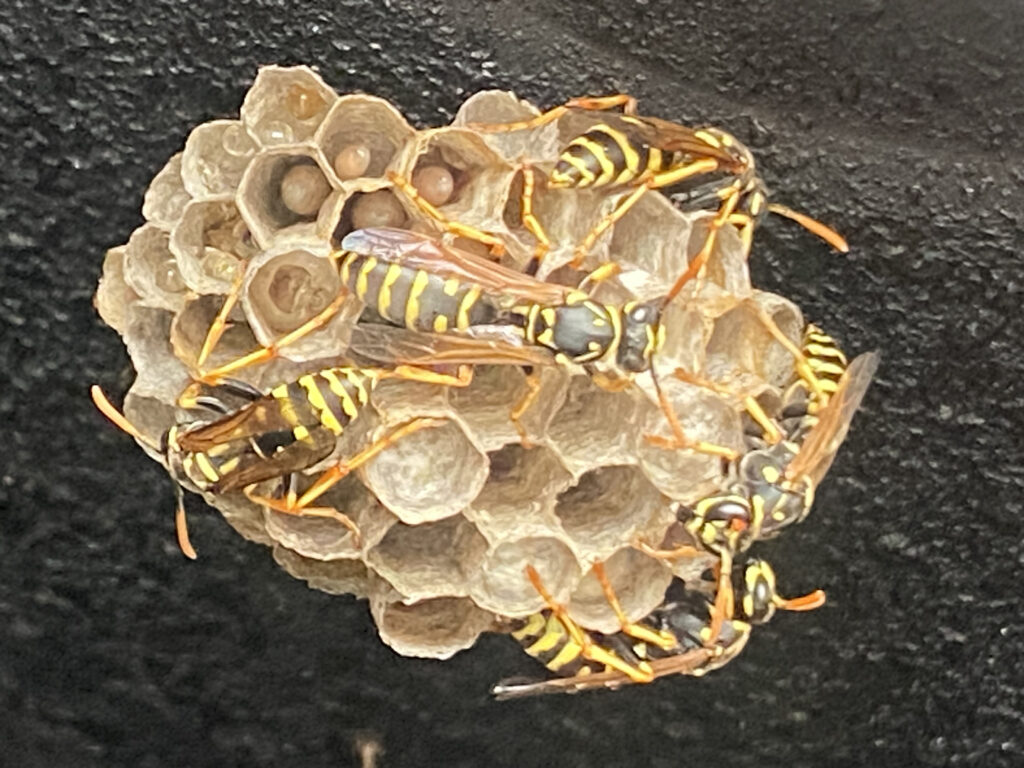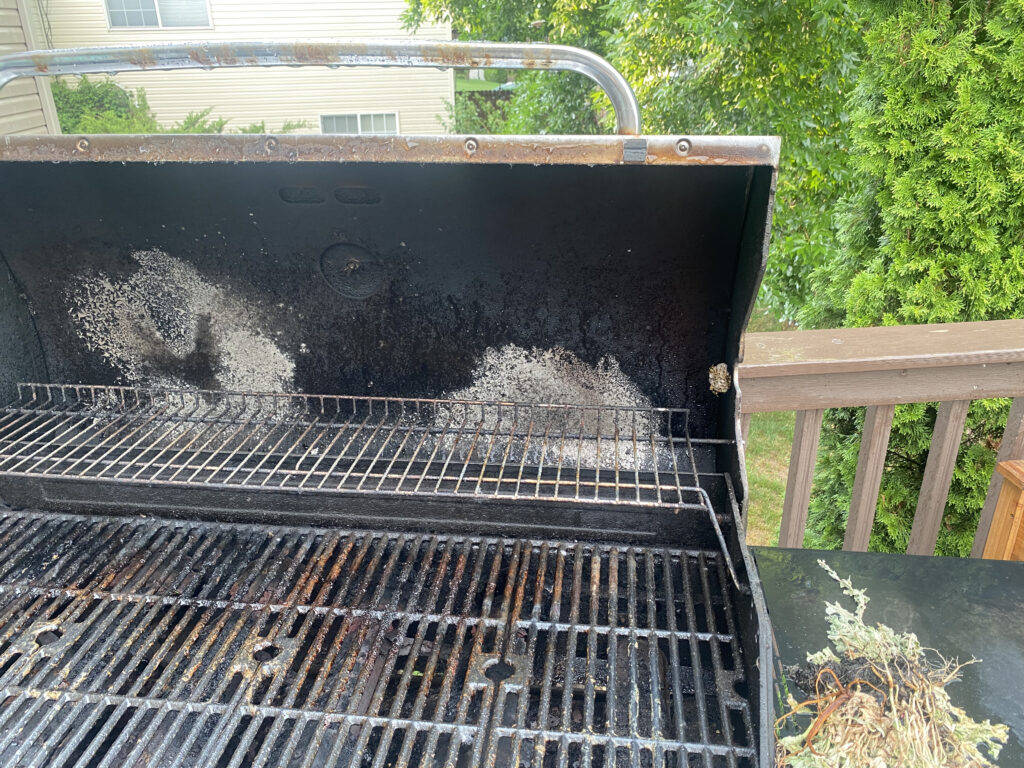The best time to sleep is when you are tired. The best time to eat is when you are hungry. Some timing is obvious. When it comes to insects with sharp butts that can inject you with venom, timing is crucial but not obvious. When is the best time to remove a wasp nest?

When the weather is right
One of the most interesting facts about wasps is they don’t like rain. They are not Wicked Witch of the West susceptible to water, but when their wings get wet, their flight abilities diminish significantly. When the weather turns to rain, wasps are more likely to gather back at the nest and wait it out. This tactic pulls them out of the danger or slower flying and increases the number of wasps that can be removed with one effort.
Working in the rain is less than fun for people as well so look for a break in the storm. During storms such as a thunderstorm, wasps will remain docile and near motionless in between bouts of rain. A quick poke test can determine if they will hang around or take off. If they are in a hunker down mode, they can be removed by placing a bag over them or simply scooping up their nest with a shovel. The best time to remove a wasp nest is on the transitional weather around a rainstorm.

Best time of any given day
Some times of year and parts of the country do not have consistent enough rain storms to count on for wasp nest removal. In these instances, the best timing for wasp nest removal is after dark. Most wasp colonies gather back together in the evening delivering the bulk of the population to you in one big clump. Keep in mind while this is the best time of day to find the wasps all together and in a more relaxed state, it is also the time of day where it is harder to see them. It is also the time of day that is easiest to trip, so consider the pros and cons before the nocturnal attack.

Before the wasp nest…
The absolute best time to remove a wasp nest is before the wasp nest…
- gets any bigger – how many is too many?
- gets a chance to have the next batch of wasps hatch and join the menace
- ever gets a chance to form
- harms someone – most people get welts or local swelling from wasp stings, but some have severe reactions
- damages the structure – In some instances, wasps may build their nest into voids and create outward pressure on flexible materials such as siding which can lead to warping or other issues
Staying ahead of wasp nests requires vigilance and regular inspections. Knowing what to look for helps. Keep an eye out for:
- conducive conditions
- recurring adult sightings
- clumps of mud or paper mache cemented into overhangs
- rodent or other ground burrows which can be inhabited
Though predicting the future is quite a challenge in many areas, those in the know can foresee the signs of wasps. When the earliest indications of a wasp nest occur, that is the best time to remove a wasp nest through changing the conducive conditions.
Making any day the right day
When considering how annoying wasps are to deal with, it is a relief to know that any day can be the right day for wasp nest removal. By turning the wasp warlords of Rove Pest Control loose, you will have the comfort and assurance of someone else being the target of their attack. Rove gets the wasps and you get the freedom from the hoards of flying poky-behinds.
